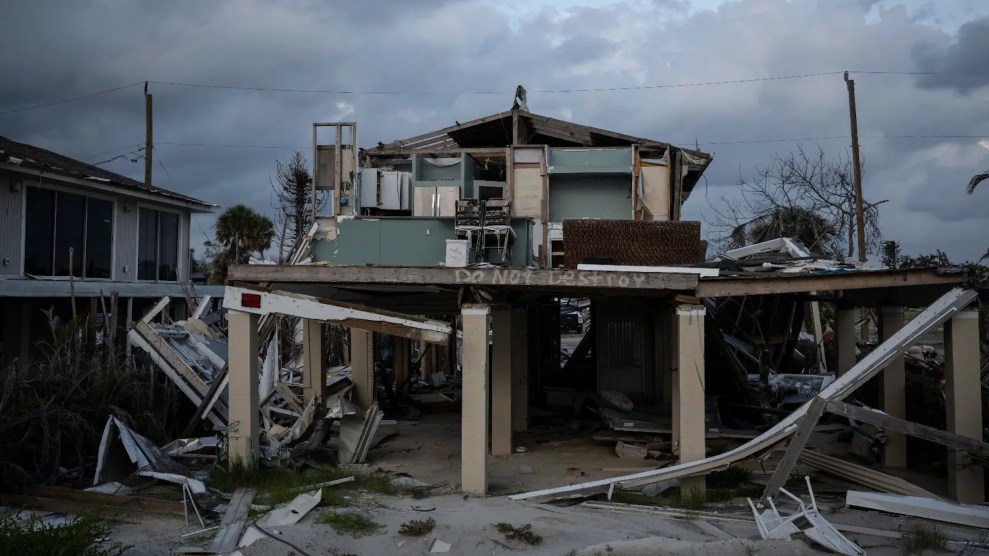After inspecting a reactor during a refueling outage in late April 2000, Andrew Siemaszko, a systems engineer at the Davis-Besse Nuclear Power Station in Ohio, wrote on an official plant work order the four words that would one day ruin his life: “Work performed without deviation.” Two years later, during a subsequent refueling outage, workers discovered that boric acid deposits had gnawed a rusty, “pineapple-sized” hole almost clear through the six-inch-thick steel cap bolted to the top of the reactor. Had the corrosion gone a third of an inch deeper, through the steel cladding inside the reactor vessel, radioactive steam would have flooded the reactor’s containment dome, and Davis-Besse might have become the next Three Mile Island.
Plant operator FirstEnergy ultimately fired Siemaszko, claiming he had failed to report the corrosion. Five years after the incident, the U.S. Nuclear Regulatory Commission (NRC) barred him from working in the nuclear industry for at least the following five years, and Siemaszko, along with plant engineering manager David Geisen, was indicted in early 2006 on five counts of lying to the government and falsifying records. Besse-Davis contractor and consultant Rodney Cook was charged with four counts of the same.
But Siemaszko and his defenders—which include the Union of Concerned Scientists and Ohio Citizen Action—insist he never deceived anyone. To the contrary, documents prove the engineer had repeatedly told his bosses that the reactor head needed a thorough cleaning. Siemaszko’s four infamous words clearly referred to another maintenance task he had performed, which involved replacing hard plastic covers on the reactor head. He’d even written out instructions for a work crew to scrub the reactor, and personally participated in the cleaning three days later. But FirstEnergy refused to let the crew complete the job, Siemaszko alleges, because the workers had exceeded their allowed radiation dose and the shutdown was costing the company—a nuclear plant in production earns up to $1 million a day.
In reactors like the one at Davis-Besse, highly pressurized water laced with boric acid is used to regulate the core temperature and moderate the neutrons that sustain the atomic chain reaction. Had the acid corrosion been ignored for another few months, or even weeks, the water might have exploded out of the reactor and into the containment dome, risking overheating and meltdown of the core.
But neither FirstEnergy nor the NRC has evidence showing that Siemaszko was responsible for the corrosion, or ever lied to his supervisors about the problem. The NRC, in fact, had ordered the reactor shut down for inspection in December 2001 due to the company’s failure to satisfy safety criteria, according to Union of Concerned Scientists’ nuclear-safety expert Dave Lochbaum. But at FirstEnergy’s request, the commission agreed to delay its inspection to coincide with a refueling outage that took place in March 2002. “NRC’s senior managers shelved the draft order because it would have cost the company money,” Lochbaum says.
In any case, the problem should already have been evident, if not to FirstEnergy then at least to the NRC: In a November 2001 briefing for one of the commission’s top executives, agency staffers noted that certain parts of the reactor head couldn’t be inspected because they were “obscured by boric acid.” Later, after the hole was discovered, staffers noted that an “inspection conducted in 1998 was more limited in scope and quality because of the presence of boric acid deposits.” And in 2004, a Government Accountability Office investigation acknowledged that at least one on-site NRC inspector had seen a photo of the reactor head streaked with rust-colored boric acid in the spring of 2000, “but did not recognize its significance.”
Industry watchdogs, including the Union of Concerned Scientists, say the Davis-Besse scare highlights a history of regulatory neglect that harkens back to the agency’s founding—the NRC was born in 1974 from the ruins of the booster-driven Atomic Energy Commission. The UCS has tallied 47 incidents since 1979 in which the commission failed to adequately address safety issues until the problems forced plant shutdowns. In some cases, the UCS reports, “the NRC allowed reactors with known safety problems to continue operating for months, sometimes years, without requiring owners to fix the problems.”
The commission is still industry funded—albeit indirectly—in the form of fees, prompting no less than Senator Barack Obama, a cautious supporter of nuclear energy, to declare it “a moribund agency…captive of the industries that it regulates.” NRC spokesman Scott Burnell insists that because industry fees are first routed through the U.S. Treasury, they create no conflict of interest. “It’s not a case where the industry is handing us a check,” he says.
But with Davis-Besse, it’s a case of an industry-dependent regulatory agency disciplining plant employees to make it appear that justice has been done. Siemaszko, whose trial is scheduled for August 11, now lives in Texas, where he works as a contractor, supporting his wife and children on a small fraction what he once earned as a nuclear plant engineer. “I spent 20 years getting to where I got,” he told Cleveland Plain Dealer science writer John Mangels in June 2005, prior to his indictment. “I spent 20 years listening to the Polack jokes. Finally I got to the highest level in my profession. Now I’m 51 years old and I’m back to entry level. I have no money, no profession. This is a tremendous blow.”















